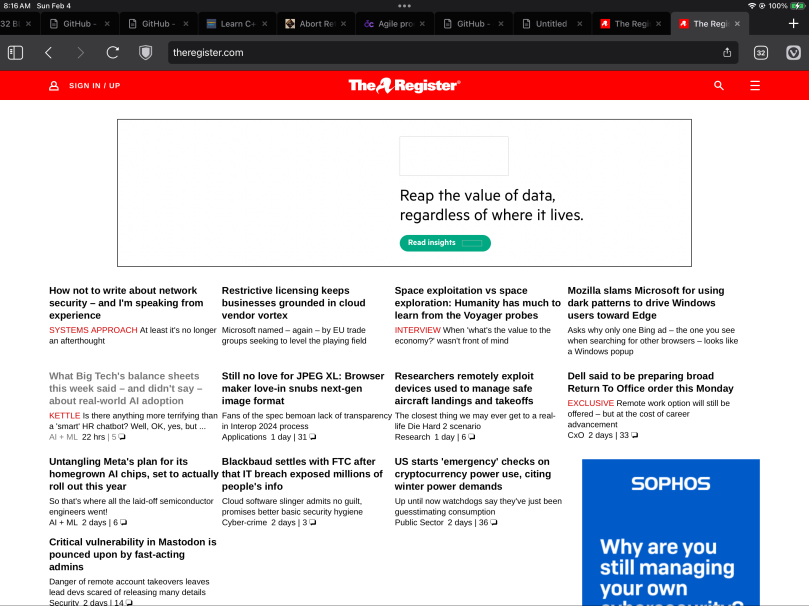I have a 12.9″ iPad Pro, 2nd generation, with the latest iOS version 17.3. Even though my iPad is getting fairly long in the tooth ( released June 2017, or seven years ago ) Apple still updates it, although I suspect iOS 17 is the last release it will receive. But until that time comes I continue to use it, keeping all my apps up-to-date. One of those apps is Vivaldi, which I installed when it was finally available for ipadOS, sometime in October of last year.
I’ve been a solid desktop Vivaldi user for a number of years on Linux, macOS, and Windows. I still continue to use it on the macOS and Windows desktop, having switched back to Firefox on Linux Mint because Firefox works better on Linux Mint for me. But trying to use Vivaldi on Apple’s mobile operating systems has been second rate compared to Safari, which is a bit weird considering that Apple forces everyone to use the same Webkit engine that Safari uses. What follows are two examples of site rendering, Safari first then Vivaldi.

TheRegister might not be the “best” site to browse, but I enjoy its eclectic humor and the subjects it covers. I’ve been reading this site for years. Note how Safari renders the page with illustrative images scattered across the page. Also note the white gaps, one across the top, and one down on the lower right. This is where ads would go if I didn’t have an ad blocker installed on my iPad.

Here’s the same page in the Vivaldi browser, Note how ads are showing up across the top and down the right side, and how there are no, repeat no, illustrative images like there are in the Safari view.
Vivaldi performs equally strangely with other sites. For instance, The Verge likes to write articles with lots of X tweets quoted in the body of the article. Under Safari I can see those tweets (xeets?), but under Vivaldi there are big blank gaps where nothing is shown. And on it goes, with Safari doing a much better job of rendering sites than Vivaldi.
These are just the problems on an iPad. Trying to use Vivaldi on an iPhone is one of the worst experiences I’ve ever endured, so much so that Vivaldi lasted about 30 minutes before I decided I’d had enough and deleted it. I’m about ready to remove it from my iPad as well.
Is Vivaldi on mobile any good? Under Android, the answer is a resounding ‘yes’. I have a Samsung Galaxy Tab S6 Lite 2020 currently running Android 13. I started using Google Chrome on the S6 until I got so tired of the ads that I installed Vivaldi. Once Vivaldi was on the S6 and I started using it, it quickly became apparent that the only way to surf the web on the S6 was with Vivaldi and Vivaldi’s Tracking and Ad Blocking set to its highest level, Block Trackers and Ads. Vivaldi on Android at that setting is head-and-shoulders superior to Vivaldi on iOS at any tracking level.


You must be logged in to post a comment.